Robots on wheels begin shipping goods to residents of the United States and Britain
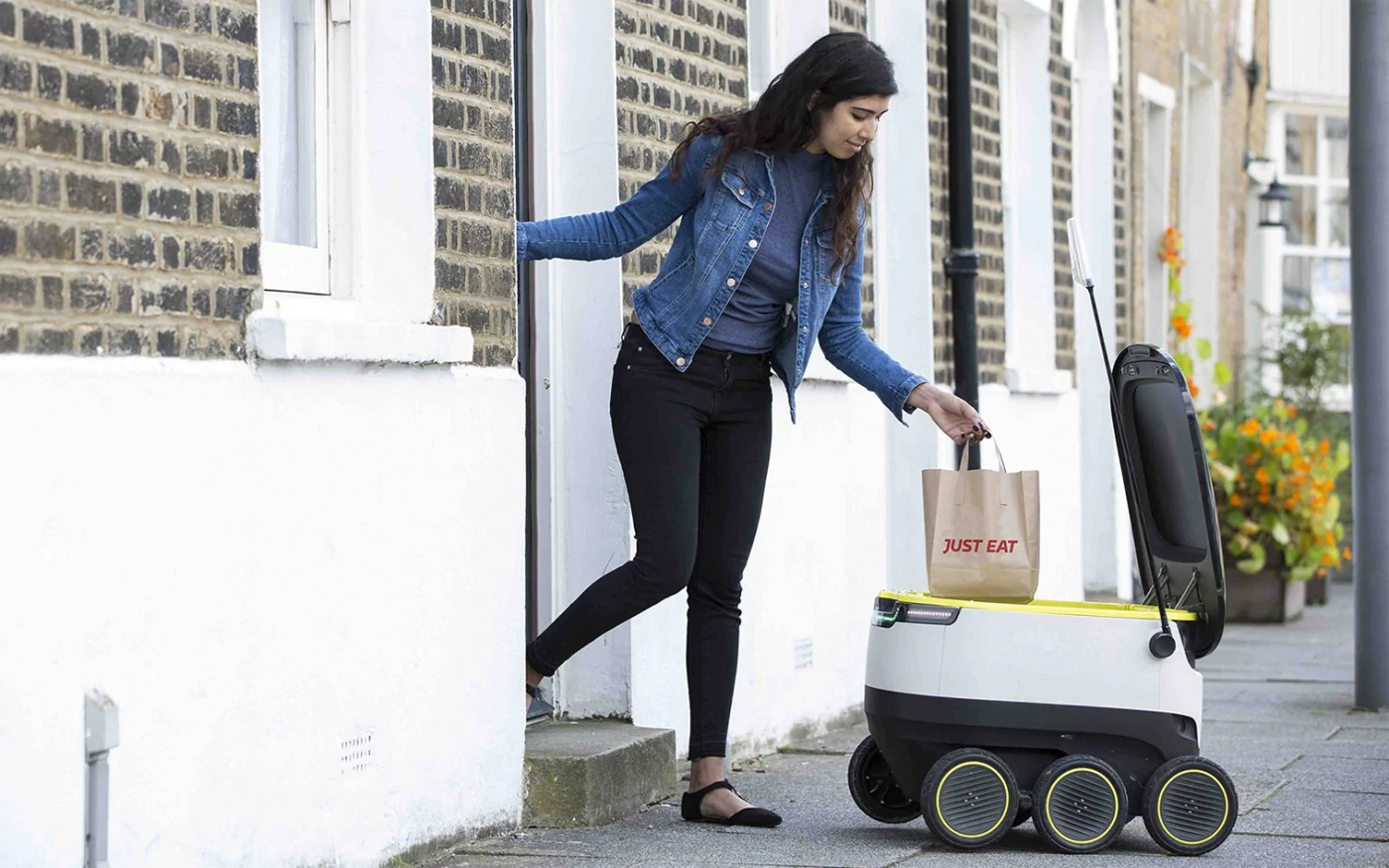
A year ago, Starship Technologies began road testing of self-propelled robot couriers in the US to deliver food from restaurants directly to customers' doors. Someone saw prospects for the future in such a technology, but there were quite a few dissatisfied people who did not want to share the sidewalk with the multivarks roaming back and forth. Machines turned over, poured barbecue sauce, even tried to steal. Nevertheless, the startup successfully extended its activities to more than one hundred cities, and recently announced that it was entering the next big stage of development. Maximum goal: catch up with Amazon.
If earlier Starship Technologies was conceived precisely as a company for fast delivery of food from local cafes and restaurants to hungry customers, now a large expansion of the scope of activities is planned. The company starts to deliver any goods and parcels - for example, from online stores. She says that this is the world's first real working service for the delivery of parcels by robots. CEO Lex Bayer, in a Starship press release, explains:
We hope that you will never again have to miss the delivery of goods to your home. You will not need to ask for leave from work, reschedule meetings, go to the post office or contact the courier because of the inconvenient delivery time. The robot will bring you the goods exactly when you want.
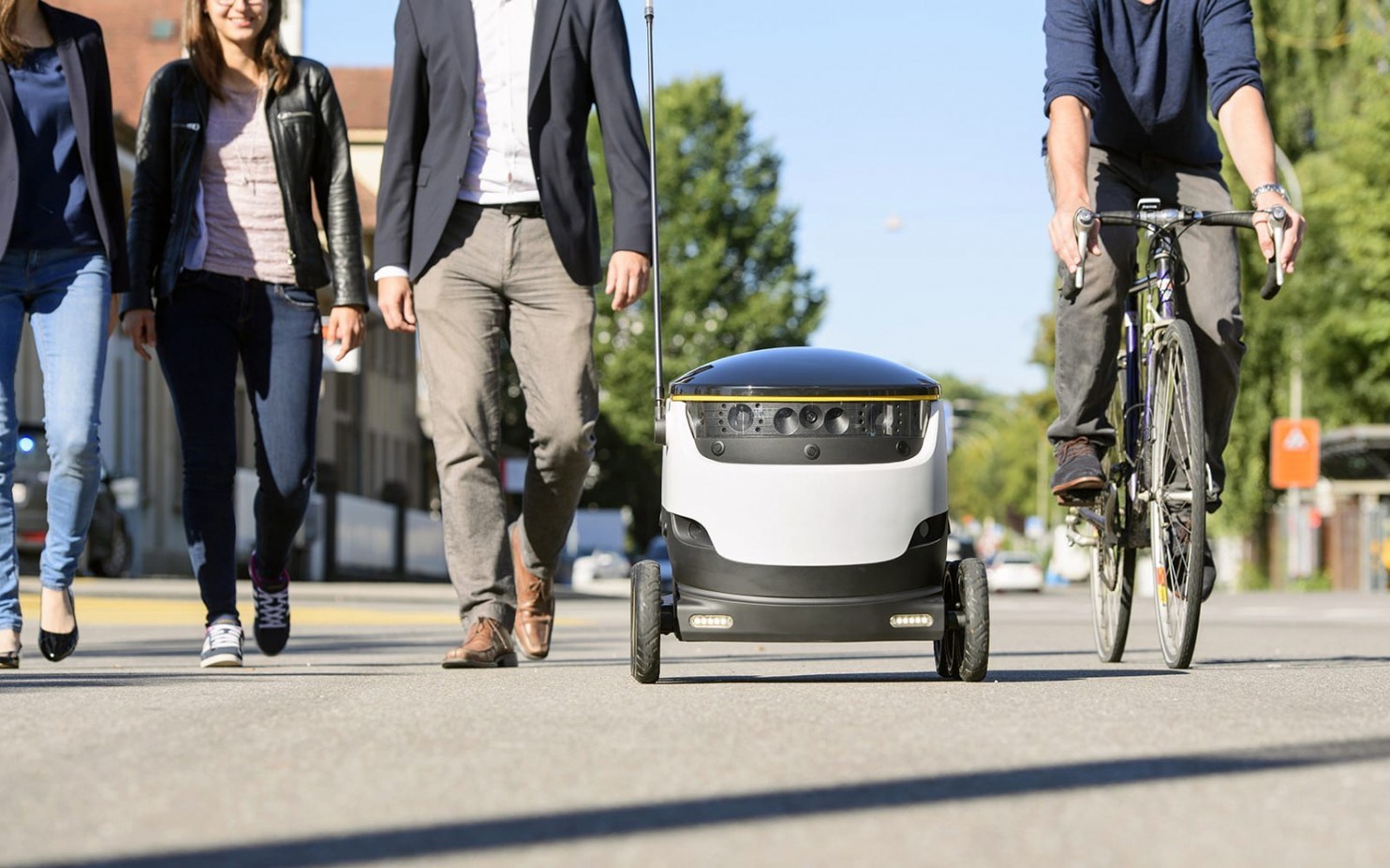
The service has already been launched in the city of Milton Keynes in the UK, plus an expansion is planned for Washington and San Francisco in the coming weeks. This spring, the project was banished from San Francisco, banning robots from walking along the sidewalks with pedestrians. But the company believes in an early return: since then, it has managed to settle in many other cities, and to prove the safety of its technology.
How it works
Starship Technologies was created by two co-founders of Skype in 2014 in Estonia. Now the startup is working in twenty countries, working with local companies that want to deliver their products to customers using robots. Six-wheeled cars are able to reach speeds of up to seven kilometers per hour and determine obstacles from ten meters. They drive completely autonomously, based on information from nine cameras and several dozen sensors. Nick Hendrick, one of the new robots development managers, proudly says:
Our car can go through anything. If she sees that the road is blocking something - a stick or curb - she decides whether to go around or climb over the object. She easily climbs on small mounds or curbs. If someone has not removed the dog, the robot will bypass the "dangerous area". And if he sees that the pavement ahead is being repaired, he may decide to completely change his route.
So far, cars almost always accompany people. His task is to answer questions, and, of course, to make sure that some bug in the algorithms does not lead to something irreparable. So far, according to Starship, no problems with the behavior of robots have been noticed. They quietly travel along the sidewalks, diligently wait for the red light at traffic lights and are able to cross the road on a zebra, wagging their flag so that everyone will notice them.
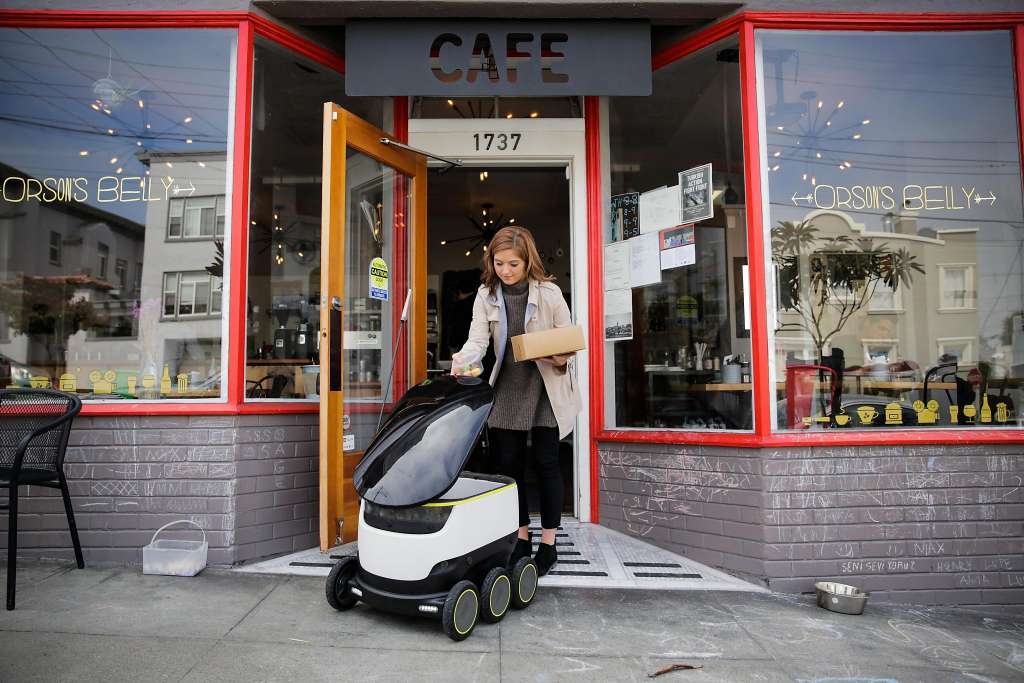
')
The robots have not yet received a name (Starship wants to choose “something sweet” for them), but they have already gained quite a few ill-wishers. From homeless people and ordinary passers-by, who are accustomed to sharing the sidewalks only with other people, to government organizations that raise questions of privacy and the right to use public space. From the latest Starship fights with technology borrowed from Google. Like, yes, their robots constantly record everything around them, plotting a route. But people's faces are automatically detected and washed out, and the data itself is inaccessible to anyone, except for other robots in the system.
With regard to the use of public space - the company so far has to get personal permission from each of the cities in which it wants to work. In America, these were Washington and San Francisco, and most of all the robots at the firm in Tallinn (where the development center is located) and Milton Keynes not far from London, where the mayor went to meet a startup.
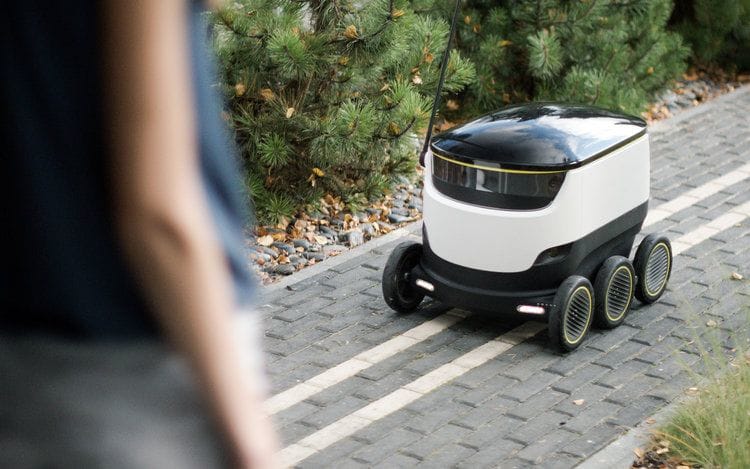
As for such an ambitious startup, Starship works in conditions of rather limited finances. For four years, she received an investment of $ 42 million . At the same time, it has to compete with companies of the level of Amazon, Google and UPS, which also want to control the “delivery of the last mile” from warehouses to specific users.
These last few kilometers account for more than half of all delivery costs (according to Business Insider), even if the goods traveled in containers from the other side of the world. In order to somehow reduce costs, all the major players are now relying on drones. In any case, they have to pay less than courier people. The most successful and well-known program - Amazon Prime Air . According to it, selected villages in the United States and Britain receive parcels by drones for almost two years as part of the test.
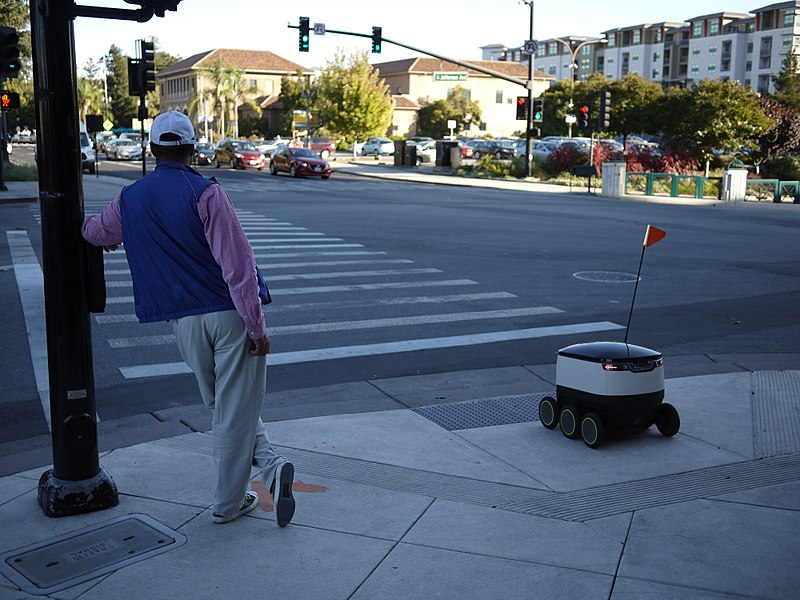
Oddly enough, air delivery has fewer legal restrictions than ground robots. Many states require such robots to be piloted by a person who will be responsible for the legal situations that arise. Only Florida, Wisconsin, Idaho and Virginia have made exceptions in their laws. But they also require that the robot weighs no more than 80 pounds (36 kg).
Advantages of free shipping
Until recent weeks, Starship Technologies was interested only in food delivery, and advertised itself among cafes and restaurants (for example, in 2017, Domino's pizzeria began to use its services). But now, apparently, the company realized that the market can be seriously expanded. Even if its robots travel only within a few kilometers, due to the ubiquitous hubs, the delivery time in the city is no more than 15 minutes. A load capacity of autonomous machines - up to 22 kg. No drone is so lucky.
Another advantage of ground-based robotic travelers is the security of the package. The device can be opened only by a warehouse (restaurant) and a buyer, who receives a code in the application on the smartphone. Hacking it will not work, and the robot is able to give signals if it feels that someone is trying to kidnap him.

On the streets of Tallinn
Unfortunately, so far there is no shortage of volunteers. Here is exactly the same story as the electric scooters in Silicon Valley . Unattended robot? And I'll throw him in my car, then we'll figure it out. In order to somehow protect themselves from vandals or thieves, the device is equipped with gyroscopes, plus there is a microphone and a speaker inside. Sensing something wrong, the robot sends a signal to the operator, who can take control of his control, send a request to the police or through the speaker to explain to people that they are breaking the law.
Announcing the switch to the delivery of any goods, Starship Technologies refers to the statistics of Wakefield Research. According to this data, 3 out of 10 Americans who live in houses or townhouses have been at least once faced with the theft of their packages in the past year. And 53% of Americans know someone who has stolen something. Many even have to take matters into their own hands , because the cameras standing outside do not help. But if the goods are delivered to your home by a personal robot, which also arrives with an accuracy of up to a minute, you can not worry about stealing a package from the porch. To whom would you, say, entrust the delivery of an expensive laptop - a drone that will bring the goods and fly away about their business, or a sturdy machine that will sit and wait for you at the door?
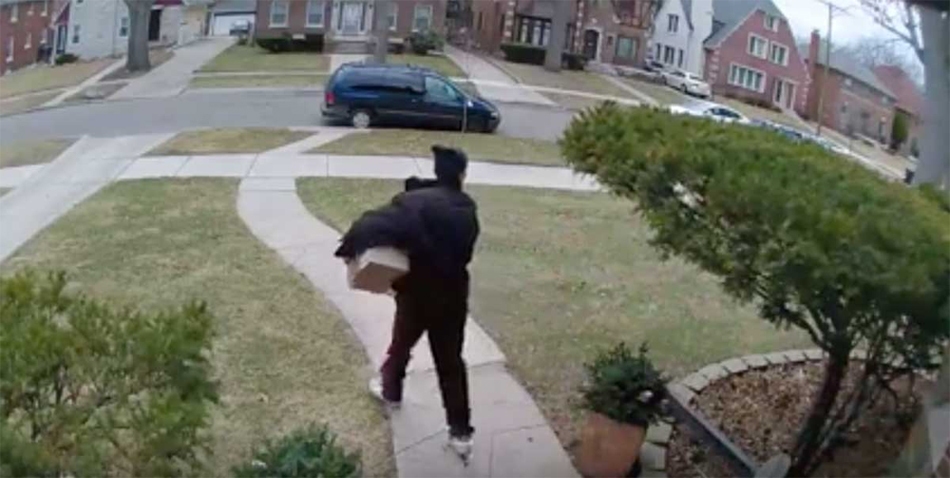
So far, a subscription to a delivery service with Starship in selected cities will cost $ 10 per month. For users, they create a cell address in the warehouse, where any parcels and goods are sent, for example, from Amazon. The arrival of the goods is reported by the application in the smartphone, and the client can choose when the robot should go to him with an order. Ten to fifteen minutes - and you can open the door, enter the code in the robot and pick up your thing.
When there are more cars in Starship Park, the company predicts that the cost of each delivery will fall to about $ 1. So far, the price is determined by Postmates, from which most orders come to Starship, and there they charge for delivery of food or goods from $ 3.99 to $ 20, depending on the distance.
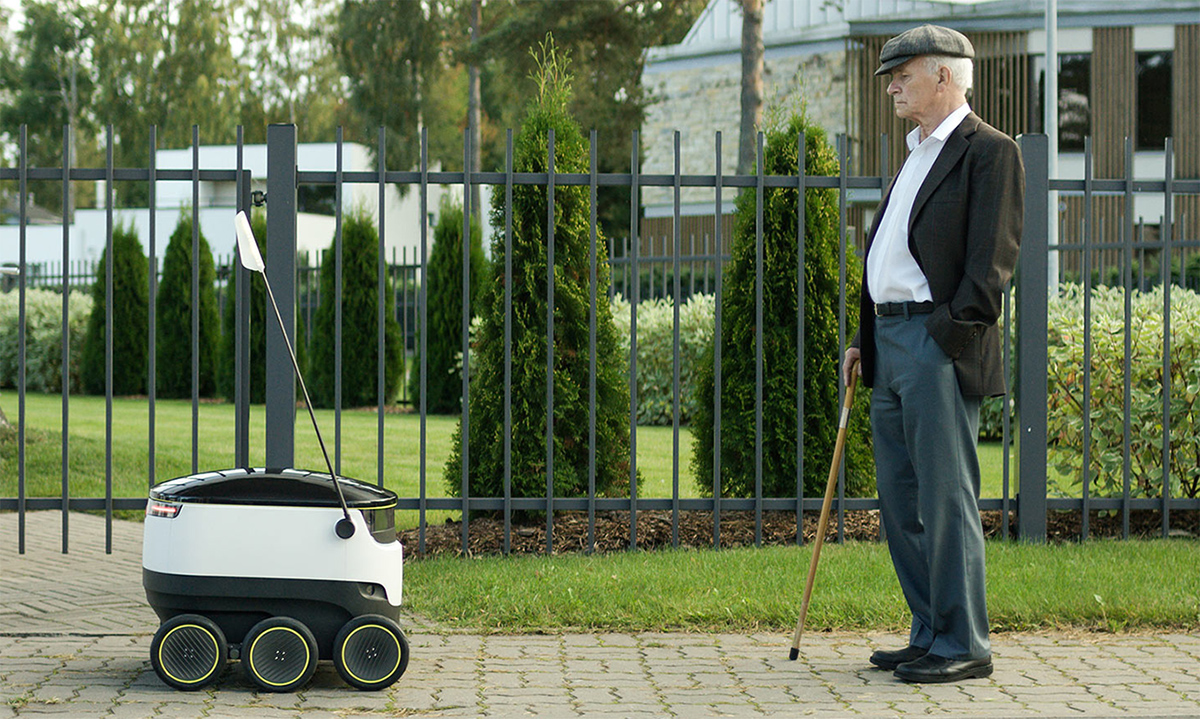
Now Starship robots ride around Estonia, England, Germany, Switzerland and the USA (Washington). Already 100 cities and 125 thousand kilometers traveled. The company hopes that this is only the beginning, and in the future their network will be no worse than that of Amazon. The main thing is to overcome legislative barriers, and to show that it is more convenient and more profitable to deliver things by ground robots than by drones or courier people. Well, it would be nice if the sidewalks in the cities were built equally, yes.
PS Pochtoy.com also delivers goods - however, by air. From America to Russia. From $ 8.90 per pound. After registration , Habr readers receive a 7% discount on the HABR code.
Source: https://habr.com/ru/post/428900/
All Articles